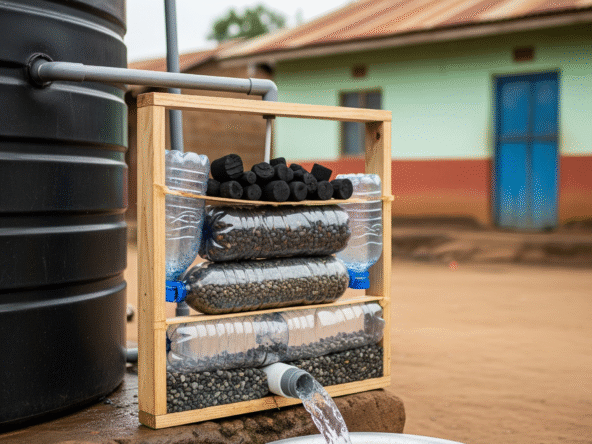In Kenya, many homes and rental properties rely on plastic water tanks for domestic supply, rainwater harvesting, or borehole storage. But a critical part of the installation is often ignored where does the tank overflow go?
Without a proper drainage solution, overflow from tanks especially those over 3,000 litres can lead to:
- Structural erosion around foundations
- Flooding in compound walkways or gardens
- Cracked slabs and unstable DIY tank stands
- Stagnant water that breeds mosquitoes
This is where a gravel soak-away bed becomes essential. It’s a low-cost, DIY-friendly method to absorb and redirect water safely.
Why Every Tank Needs a Gravel Overflow Bed
Water tanks with automated refill or float switch systems often release water when full. Even basic rainfall harvesting setups accumulate overflow during heavy storms.
Benefits of a gravel bed include:
- Eliminates pooling around tanks
- Prevents washouts and soil erosion
- Promotes underground percolation and recharge
- Reduces wear on overflow pipes
- Supports clean, dry surroundings for tanks mounted on slab or steel towers
It’s also an ideal component in homes using greywater reuse, helping redirect water from bathrooms or kitchens to the soak zone.
Materials Needed for a DIY Gravel Soak Bed
You can construct a soak bed using locally available tools and materials. Here’s what you’ll need:
- Spade or shovel
- Wheelbarrow
- Ballast or crushed quarry stone (preferably 10–20 mm)
- Coarse sand (for layering)
- Geotextile fabric or gunny sacks (to reduce soil migration)
- Short PVC pipe (to direct overflow into the bed)
- Manual tamper or metal bar for compacting
The total budget is usually KSh 1,000–3,000, depending on the size and material quality.
Step-by-Step Guide: Building Your Gravel Overflow Bed
1. Identify the Right Location
Choose an area:
- Directly beneath or adjacent to your tank’s overflow outlet
- At least 1 meter away from any structural foundation
- Slightly sloped away from buildings or paved walkways
Avoid placing the bed too close to fences or septic systems.
2. Dig the Trench or Pit
Using a spade, excavate a trench or shallow pit. A standard bed for mid-size tanks (e.g., 5000-litre Kentanks) should be:
- Depth: 1.5 to 2 feet
- Width: 2 to 3 feet
- Length: 1 to 2 metres
For larger tanks like 10,000L or IBC systems, extend depth or add multiple trenches connected with shallow drainage channels.
3. Prepare the Layers
Inside the trench:
- Lay 15–20 cm of coarse ballast at the bottom
- Add 10 cm of coarse sand on top
- Use gunny sacks or geotextile on the trench walls to prevent soil clogging
- Optionally, create a shallow incline for better drainage flow
Slightly compact each layer using a tamper or flat bar.
4. Connect the Overflow Pipe
Use a 32mm or 40mm PVC pipe to channel overflow directly into the bed.
If your system uses a first-flush diverter, make sure its discharge outlet points into the same trench or into a pre-filtered sump nearby.
Optional Enhancements
Want to upgrade both appearance and performance?
- Top with decorative stones or concrete pavers to make the area walkable
- Add weed fabric under decorative gravel to reduce mosquito breeding
- Extend with a gravel-filled French drain to lead excess water toward dry-season plant beds
- Use a gravel trap at the inlet to reduce silt buildup
Maintenance Tips for Longevity
A gravel bed is mostly self-sustaining, but occasional upkeep ensures long life:
- Remove leaf litter or silt that builds up on the surface
- Rake and wash the top gravel layer at the start of rainy seasons
- Top up sunken gravel every 1–2 years
- If standing water appears, inspect for compaction or blocked layers
If paired with tank automation, occasional checks will alert you if excess runoff starts backing up.
Gravel soak beds are an essential feature for any rainwater harvesting or water storage system in Kenya. They’re especially effective for properties in Kitengela, Juja, Rongai, or Meru where water logging or clay soils are common.
Paired with other best practices like tank cleaning, overflow routing, and DIY tank stands a gravel bed will protect your tank investment for years.
Explore More Practical Guides:


